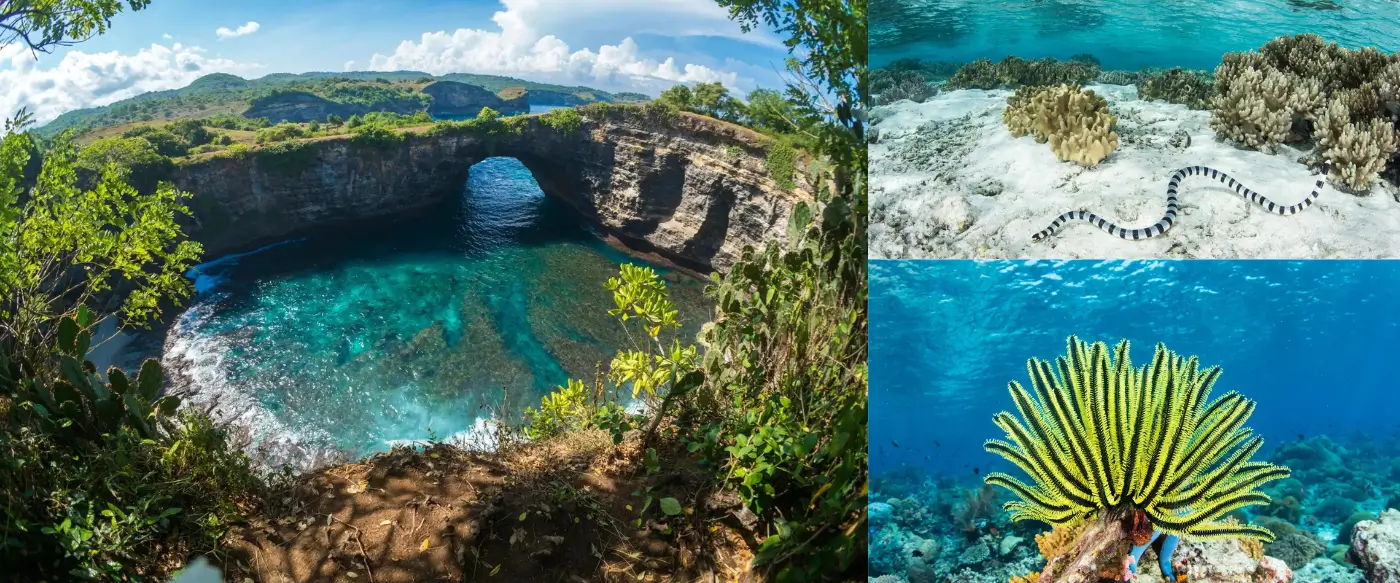
Warm waters, good weather, and the chance to see anything and everything – This is scuba diving in Indonesia.
With 85% of the world’s coral reefs located in the Indo-Pacific region, the Indonesian archipelago is home to some of the most biodiverse marine ecosystems on the planet. Hosting thousands of reef species, as well as providing food and shelter for a wealth of pelagic species, Indonesia is a top destination for scuba divers.
Dives can range from beautiful drifts along stunning coral slopes and walls, where you will be able to discover a plethora of little critters, giant schools of fish, and even larger species such as schools of sharks, manta rays, dolphins, and sometimes even whales. Stay at dive resorts, charter your own equipment and shore dive, or join a live-aboard trip to discover parts of the ocean that have yet to be explored! Indonesia has it all.
Best Dive Sites in Indonesia
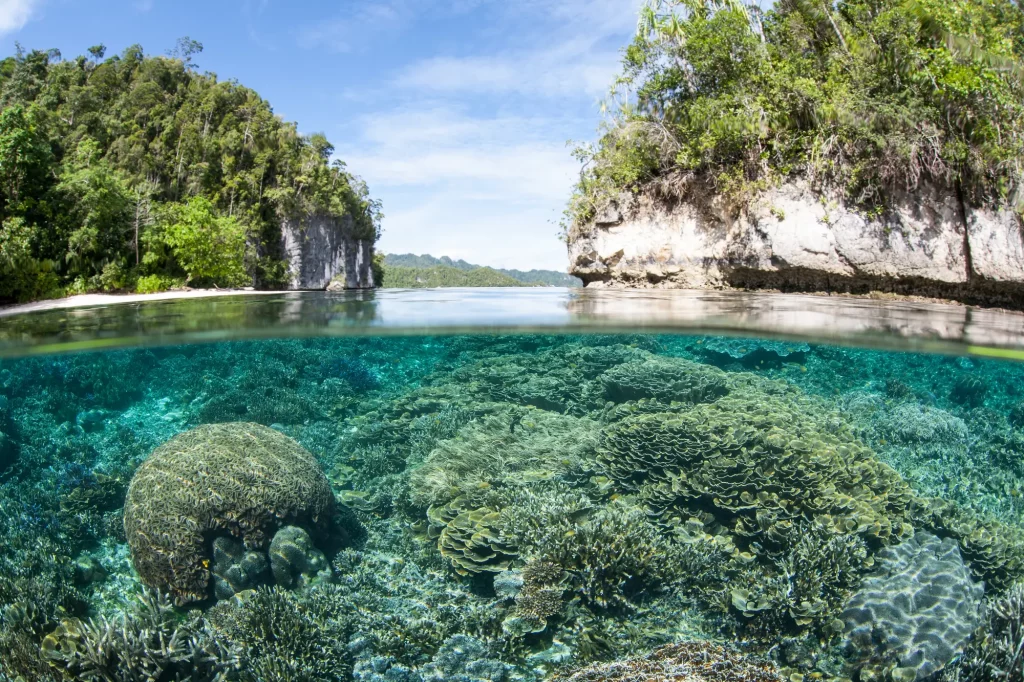
Raja Ampat
One of the best diving locations in Indonesia, and the world, is the islands of Raja Ampat. Secluded, scattered, and located in the heart of the Coral Triangle, conditions come together to create a flourishing habitat for all sorts of marine life.
75% of the world’s marine species can be found in Raja Ampat, with Magic Mountain being one of the best dive sites in Indonesia as it is one of the few places in the world where reef and oceanic manta rays can be seen together.
Raja Ampat also hosts an abundance of endemic species such as walking sharks, Papuan garden eels, and mantis shrimp, amongst many other weird and wonderful creatures. Not only is the underwater world a magical place, but the sights above water are some of the most iconic in the world. The brilliant emerald green water that lines the many little islands in Raja Ampat are incredible sights that will stay in your memory forever.
Why we recommend it:
Raja Ampat is known for its extraordinary marine biodiversity and is often described as a diver’s paradise. Despite its growing fame among the diving community, certain areas within Raja Ampat, such as the southern region around Misool, remain less explored and more difficult to access. These areas are typically reached via liveaboards rather than day trips from resorts, which limits the number of visitors and helps preserve the delicate marine ecosystems. Misool, with its unique underwater landscapes and abundant marine life, is a prime example of a lesser-visited area within this popular region.
Best time to dive in Raja Ampat
The best months for diving in Raja Ampat are between October to April/May. During this time of year, there is less rain, and ocean conditions are more calm, leading to better visibility. The best way to explore this part of Indonesia is by liveaboard, and you’d probably want ideal weather if you’re going to be living on a boat!
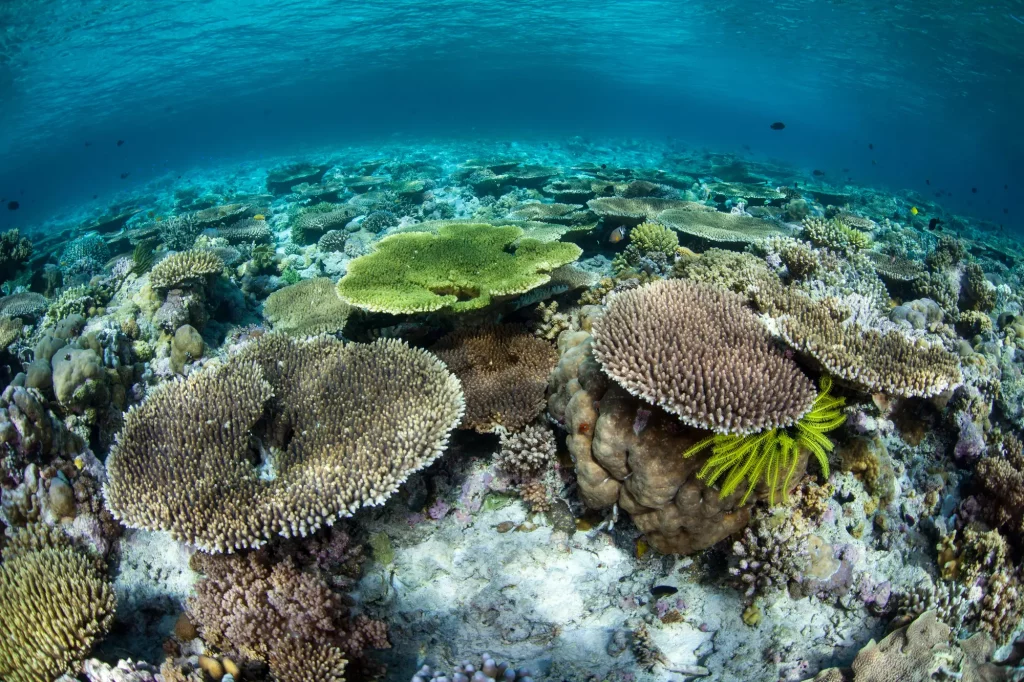
Wakatobi
A UNESCO Marine Biosphere Reserve, Wakatobi is the best place to dive in Indonesia when it comes to macro diving. Famous for its high density of little marine critters, some of which include pygmy seahorses, nudibranchs, ghost pipefish, frogfish, and the cute but deadly blue-ringed octopus, Wakatobi also has some of the healthiest and best reef ecosystems in the world.
Dive sites are all within an hour from each other, with very accessible shore dives for many of the spots, one of the best being House Reef. Wakatobi is also an amazing spot for snorkelers too if you are traveling with friends and family that do not scuba dive.
The Wakatobi Dive Resort is also one of the few places in the world that offer fluo diving – an alternative form of night diving with special torches that highlight fluorescent underwater life. This is an experience that should not be missed!
Why we recommend it:
Wakatobi Dive Resort promotes sustainable tourism practices, ensuring that diving activities have minimal impact on the environment. The resort’s operations are designed to support conservation efforts and local communities. Its remote location, rich biodiversity, and strong conservation measures make it an ideal site for eco-conscious divers.
Best time to dive in Wakatobi
The best time to dive in Wakatobi is between March to November, with the start and end of the season being the busiest times as conditions are calmer. However, Wakatobi really is a year-round dive location. Their short wet season of December to February can be considered the least favorable time to visit.
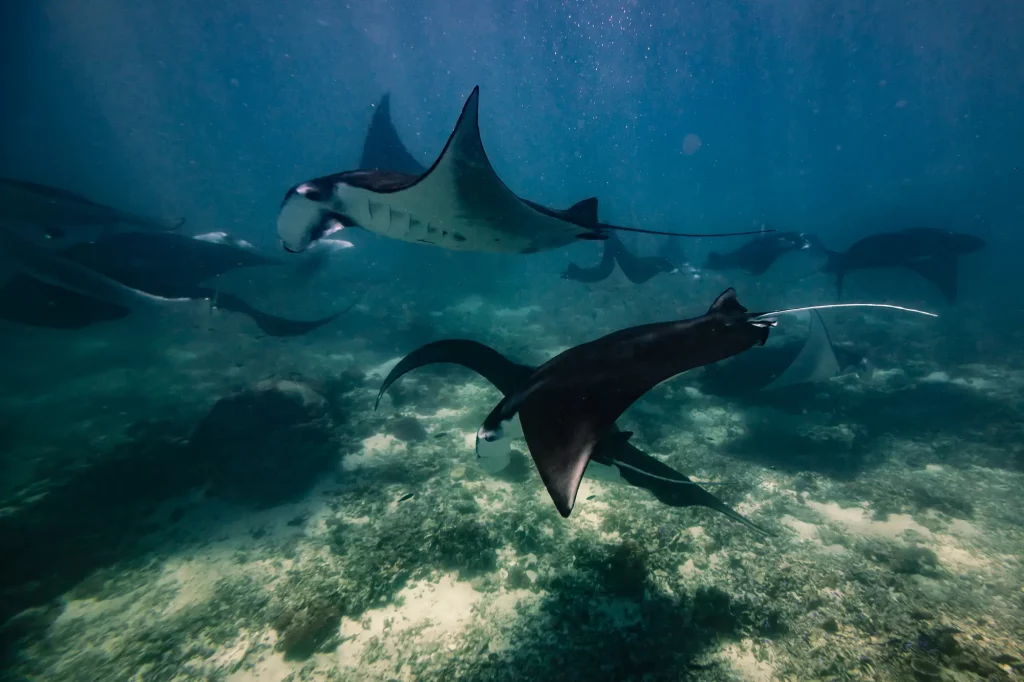
Nusa Penida
Some of the most accessible yet pristine and stunning dive sites in Indonesia are off the coast of Nusa Penida. Diving against a backdrop of sheer limestone cliffs that mimic a Jurrasic-like wilderness, you can have the chance to see reef manta rays, schooling giant trevallies, bamboo sharks, and even the elusive sunfish as you drift along vibrant coral slopes and walls.
Some of the best scuba diving in Indonesia takes place in Nusa Penida, at spots known as Manta Point, Crystal Bay, and Toya Pakeh, all within a 40-minute boat ride from each other.
Why we recommend it:
Nusa Penida, part of Bali, is gaining popularity for its manta ray encounters and the famous Manta Bay. However, it still offers relatively quiet dive spots compared to the more crowded areas of Bali. The island’s dive sites are known for their challenging conditions, which tend to attract more experienced divers, thus limiting the overall number of visitors and helping to reduce environmental strain.
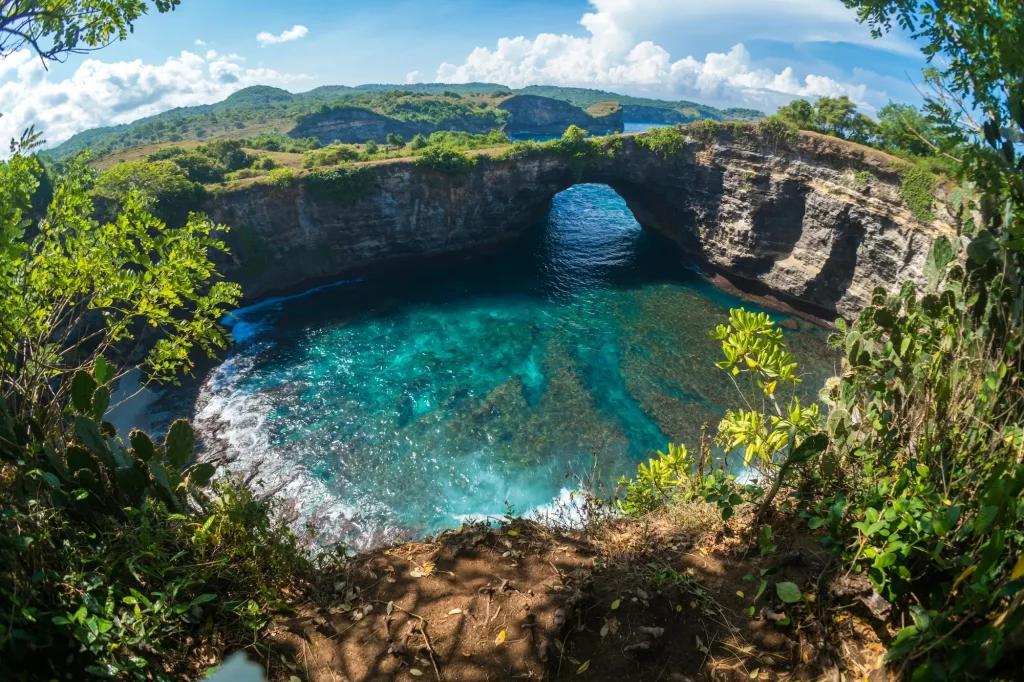
Best time to dive in Nusa Penida
During July to September the water is at its coldest, and more pelagic species (sharks, dolphins, and sunfish) come to visit the reefs. This is the busiest time of year to dive here, in terms of marine life and divers. Otherwise, Nusa Penida is also amazing to visit all year round, except for November, when the manta rays take leave.
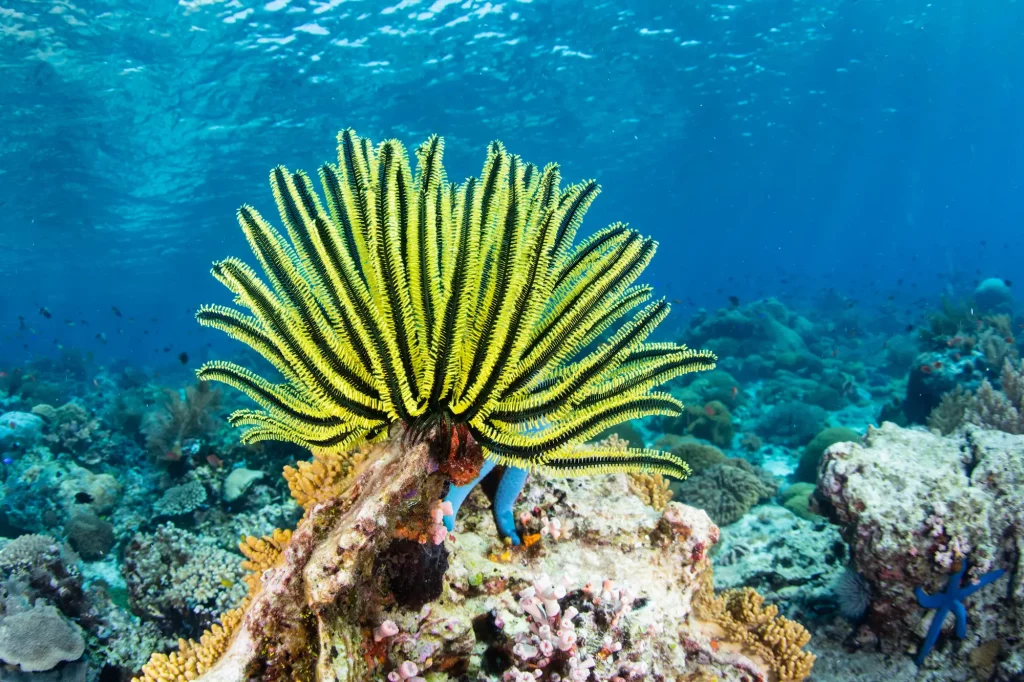
Alor, East Nusa Tenggara
Alor is arguably the least known among the sites for eco-diving in Indonesia. It is celebrated for its pristine reefs, incredible biodiversity, and unique underwater topography. The region remains off the beaten path due to its remote location and the limited number of dive operators. This remoteness has helped preserve its natural beauty and marine health, making it an ideal destination for divers who prioritize conservation and responsible tourism.
Why we recommend it:
Divers can expect to see hammerhead sharks from October to July, often appearing around dawn and during phases of the new moon and full moon. These waters also host the mola mola. Rhinopias, or weedy scorpionfish, are frequently found in sites like Kalabahi Bay and around the islands of Pura and Pantar, adding to the region’s allure for macro enthusiasts.
The underwater landscapes are teeming with a variety of nudibranchs, seahorses, ribbon sweetlips, lionfish, scorpionfish, and numerous species of shrimp and crabs.
Alor offers a unique and rewarding diving experience, especially for those interested in both macro and large marine species. The combination of its rich biodiversity, favorable diving conditions, and relatively low tourist numbers makes it an excellent choice for conservation-minded divers.
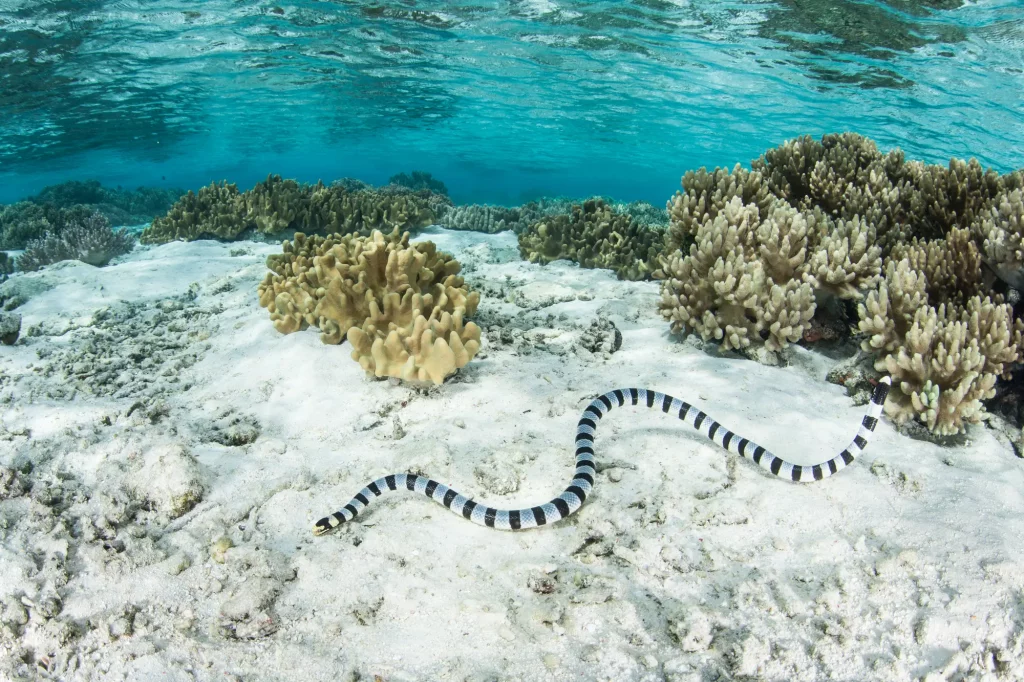
Best Time to Dive in Alor
The ideal time is from April to November. During this period, the weather is generally clear and sunny with minimal rainfall, and the water temperatures range from 25 to 30°C, making it comfortable for diving. Visibility is excellent, typically ranging from 10 to 35 meters, and can even reach up to 40 meters on the best days. This period also coincides with the best marine life sightings, as the currents are moderate and the water conditions are favorable
Environmental Considerations
When scuba diving anywhere in the world we should aim to respect wildlife and nature, whilst also minimizing our own environmental impacts. Scuba diving is an excellent way of raising awareness for the protection of marine ecosystems as it shows people first-hand the beauty of our oceans. However, there are a few things to keep in mind so as not to cause any damage and destruction to the ocean whilst scuba diving.
Important considerations include not touching or chasing wildlife as this can scare them away from humans or be dangerous for you, the diver. Additionally, try to choose a dive operator that follows a code of conduct so that your guides and instructors are also respectful of the ocean. Furthermore, follow your guide and stick to your limits when on the dive, in addition to maintaining awareness of your surroundings by practicing good buoyancy.
Health and Safety Precautions
In places like Bali, there are plenty of medical facilities that are easily accessible, your dive operator will know the best one for you, based on your situation. However, when scuba diving in more remote locations, it is likely that your dive shop will have a plan of evacuation in a medical emergency, so if you would like to know about this plan beforehand, just ask your operator!
FAQs Section
Where is the best diving in Indonesia?
The best diving in Indonesia can be in the expansive and untouched Raja Ampat, the macro heaven of Wakatobi, or the pristine and biodiverse reefs of Nusa Penida.
What are the best months for diving in Indonesia?
Diving can be done all year round in Indonesia, and the best months are specific to the location you want to visit. For example, June to September are the best months to dive in Nusa Penida, whereas October to April are the best months to dive in Raja Ampat. Make sure to check before booking your trip!
Is it safe to scuba dive in Indonesia?
If you choose to dive with certified operators and are honest about, and stay within your limits as a diver, diving in Indonesia is very safe. There are dive sites for all levels of divers, just make sure to check with your operator before booking your trip!
Final Thoughts
While Raja Ampat and Bali are renowned diving destinations, specific areas within these regions remain less frequented and align well with conservation values. Nusa Penida offers quieter spots compared to mainstream Bali, and Alor stands out as a truly off-the-beaten-path destination, embodying the principles of responsible tourism and ocean conservation.
Is it your dream to dive with manta rays? To swim with sea turtles? Or to spot a camouflaged octopus? What are you waiting for – Start planning your next dive trip to the beautiful reefs of Indonesia!